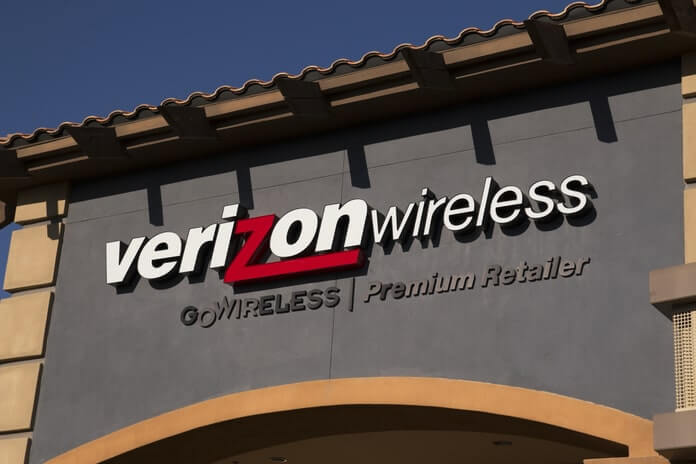Verizon stock (NYSE:VZ) has remained at five-year lows as it struggles to recover from a drop in market confidence following a dismal second quarter and an uncertain second half of the year.
Investors’ expectations were largely reasonable heading into the latest corporate earnings season, despite the blight of macroeconomic uncertainties this year, which included record-high inflation, tightening central bank policies, rising recession risks, and the effects of intensifying geopolitical tensions alongside the lingering aftermath of the global pandemic. Nonetheless, Verizon – undoubtedly one of the safest income investments on the market and the leader in US telecommunications – managed to generate a negative surprise that fell short of previously adjusted expectations.
The company is now trading at about 8x ahead earnings and 1x forward sales, suggesting a discount to its telecom peer group average (2x forward sales; 18x forward profits) while still offering an attractive annualized dividend yield of over 6%. Although we remain bullish on Verizon’s long-term fundamental health, bolstered by the incremental acceleration of 5G adoption and its present attractive dividend yield, we remain wary of more volatility in the near term, as 2H22 remains a vital execution watch.
Verizon Fundamental and Valuation Analysis Update
We estimate top-line growth to stay flat in the current year after adjusting our fundamental projection for Verizon’s actual performance in 1H22 and the above analysis of anticipated near-term operational problems. Specifically, the restoration of GPD+ growth in the services and other revenue segments is expected to remain moderate through 2H22 as management works to reclaim a strong foothold in an increasingly crowded industry first, while also managing the inevitable decline in demand for its legacy voice and data services within the business wireline segment due to the secular shift toward cloud-based solutions.
Meanwhile, despite management’s ambitions to reaccelerate growth in 2H22, profit margins will endure near-term pressure from the present inflationary environment. This is consistent with the assumption that inflation-mitigation efforts, such as price increases on legacy contracts and the roll-out of budget-conscious unlimited plans, will take many quarters to take effect before significantly impacting margins. On this basis, we estimate income decreases for the current year, as management has stated, with accelerated cost savings through 2023 and longer-term stabilization.
From a value standpoint, we are lowering our short-term price objective for Verizon stock from $66 to $50, representing a 13% upside potential based on the shares’ last traded price of $44.42 on August 19th. The adjustment reflects the industry-wide decline of multiples witnessed in 1H22 and Verizon’s near-term structural issues.
The price objective is determined by considering a multiple-based valuation technique and a discounted cash flow (“DCF”) valuation approach equally. Our forward valuation multiple assumptions remain consistent with Verizon’s expected fundamental growth prospects compared to its broader telecom peer group. Given that Verizon’s capital structure and risk profile remain consistent with our past coverage, we have maintained a WACC of around 6.5% for discounting its forecast free cash flows to equity in our valuation analysis.
Offsetting Dividend Yield
Let’s take a detour from the fundamentals and look at Verizon’s dividend distribution, another important factor for (possible) investors in the company.
Verizon presently pays a quarterly dividend of $0.64 per share, for a total annual payout of $2.56. With the stock selling at a five-year low, the annualized dividend yield is an appealing 5.8%. This places Verizon among the top competitors in the restricted pool of safe but high-yielding income options. With the firm on pace to exceed $14 billion in free cash flows for the year based on the 1H22 run-rate and expected margin deceleration in 2H22, the stock’s dividend payout is secure from being lowered despite the core business’ near-term structural misstep. When you combine Verizon’s current dividend yield of 5.8% with expected value gains of 13%, the company has a potential return of 19%.
However, we believe that Verizon stock has lost some of its credibility as a “safe” investment due to the vulnerability exposed during the second quarter to the looming economic downturn and intensifying industry competition. We anticipate further volatility in the shares’ performance over the coming months, potentially leading to better entries with more attractive yield and long-term valuation upside potential. Alternatively, investors might take advantage of Verizon’s five-year low valuation today and sell covered calls to compensate for the near-term value underperformance.
Final Thoughts
Verizon’s business performance in the year’s second half will reveal whether or not the company can reclaim its image as a secure income investment. For the time being, its credibility is on the line as investors consider whether it can deliver on its promises of long-term market share gains and cash flow generation; it is also a possible reason why Verizon’s long-time shareholder Berkshire Hathaway (BRK.A / BRK.B) recently sold its entire stake in the telco giant in favour of other opportunities.
Despite Verizon’s tremendous growth opportunity from 5G and untapped broadband, the firm will need to show steady positive momentum in 2H22 to make up for its misstep in the first half and reclaim market trust in the stock. While we remain bullish on Verizon’s generous dividend yields and long-term valuation upside potential at current levels, we anticipate better entry opportunities in the coming two quarters due to elevated execution risks associated with its near-term recovery plan from ongoing macro and industry challenges.
Featured Image: Megapixl © Imdan

















